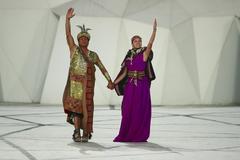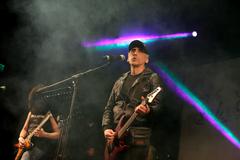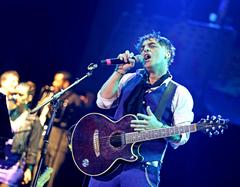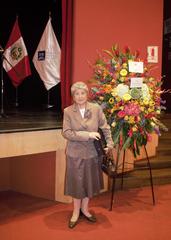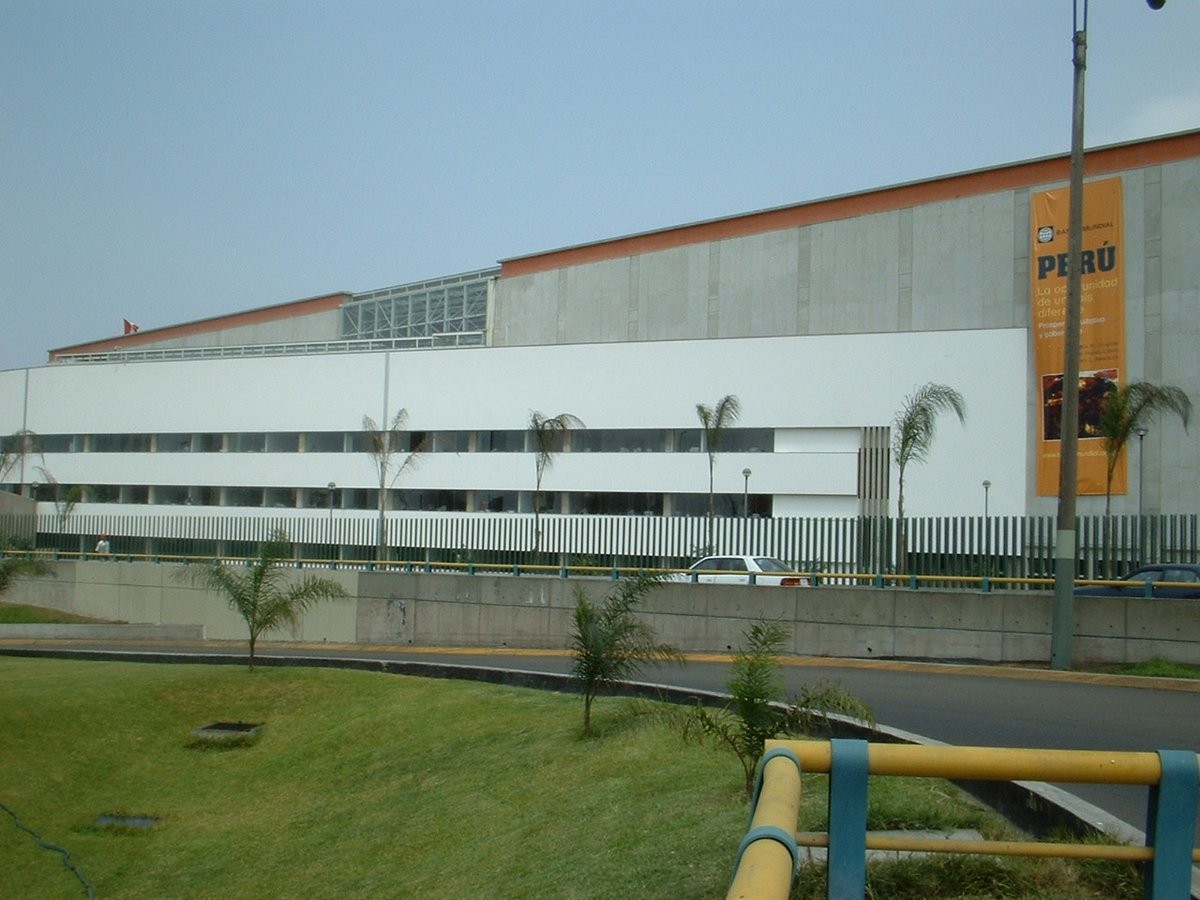
National Library of Peru Lima: Visiting Hours, Tickets, and Historical Significance
Date: 14/06/2025
Introduction
Nestled in Lima, the National Library of Peru (Biblioteca Nacional del Perú, BNP) is the nation’s foremost institution for the preservation and dissemination of Peruvian history, culture, and literature. Founded in 1821 by General José de San Martín, the BNP has grown from a modest assemblage of books into an expansive repository of rare manuscripts, colonial documents, indigenous texts, maps, audiovisual archives, and state-of-the-art digital collections. With two primary sites—the historic Abancay building and the contemporary San Borja headquarters—the library serves not only as a guardian of Peru’s multifaceted heritage but as a vibrant cultural and research hub accessible to all.
This detailed guide provides essential information for visitors, including historical context, practical details on visiting hours and tickets, accessibility features, collection highlights, and travel tips to enrich your exploration of Lima’s cultural landscape. For up-to-date details regarding events and exhibitions, consult the official National Library of Peru website or the Lima Tourism Board.
Table of Contents
- Introduction
- Historical Overview
- Visitor Information
- Collections and Cultural Significance
- Architectural Highlights
- Nearby Attractions in Lima
- Frequently Asked Questions (FAQ)
- Further Resources and References
- Conclusion
Historical Overview
Founding and Early Growth
The BNP was inaugurated on August 28, 1821, spearheaded by General José de San Martín as Peru asserted its independence. The initial collection comprised around 700 donated books from San Martín and significant contributions from Bernardo de Monteagudo, his minister. By 1822, the library’s holdings had expanded to over 11,000 volumes, including confiscated Jesuit texts, foundational to the nation’s intellectual development.
Challenges and Recovery
The library faced immense difficulties throughout its history. During the War of the Pacific (1879–1884), occupying Chilean forces repurposed the library, resulting in substantial losses of materials. A devastating fire in 1943 destroyed a significant portion of the collection. Under historian Jorge Basadre’s leadership, the BNP began a remarkable recovery, including the founding of the National School of Librarians in 1944 and ongoing restoration of its collections.
Restoration and Modernization
Efforts to repatriate lost materials have yielded success, such as the 2007 return of nearly 3,800 books from Chile. The BNP has expanded to include audiovisual and musical archives and has prioritized digitization, making resources accessible worldwide. Services such as telephone reading assistance and virtual exhibitions reflect the library’s commitment to accessibility and modernization.
Visitor Information
Locations and Directions
San Borja Headquarters (Main Site):
- Address: Av. De la Poesía 160, San Borja, Lima.
- Easily accessible by public transportation (bus lines, Lima Metro San Borja Sur station), taxis, and ride-sharing.
Abancay (Historic) Headquarters:
- Address: Av. Abancay 400-548, Cercado de Lima.
- Located in Lima’s historic center, near major cultural landmarks.
Visiting Hours
San Borja Headquarters:
- Monday to Saturday: 9:00 AM – 7:00 PM
- Sunday: 10:00 AM – 4:00 PM
- Closed on national holidays
Abancay Headquarters:
- Monday to Friday: 9:00 AM – 5:00 PM
- Saturday: 9:00 AM – 1:00 PM
- Closed Sundays and public holidays
Always verify current hours on the official BNP website before planning your visit.
Admission and Tickets
- General Admission: Free for all visitors.
- Special Exhibitions/Events: Some may require advance registration or a nominal fee.
- Guided Tours: Available by appointment; advance booking recommended, especially for group visits.
Accessibility
- San Borja Headquarters: Fully accessible, with ramps, elevators, and adapted restrooms.
- Abancay Headquarters: Improvements made for accessibility; some limitations due to historical architecture.
- Assistance for visitors with disabilities is available upon request.
Amenities and Travel Tips
- Lockers for personal items are provided.
- Public computers with internet access are available in reading rooms.
- Photography is permitted in most public areas, though restrictions apply to special collections (no flash or tripods).
- Bring a valid ID for access to certain restricted collections.
- Allocate at least 1.5–2 hours to explore the main exhibitions and reading rooms.
Guided Tours and Events
- Tours: In-depth guided tours (typically in Spanish) are available for groups or individuals. Book in advance through the BNP website.
- Cultural Programming: The BNP regularly hosts exhibitions, lectures, and educational events focusing on topics such as Peru’s independence, indigenous and Afro-Peruvian heritage, and the evolution of journalism.
- Virtual Offerings: Through collaborations with platforms like Google Arts & Culture, global audiences can access virtual tours and digital exhibitions.
Collections and Cultural Significance
Manuscripts, Archives, and Maps
- Manuscripts and Rare Books: Colonial-era records, early printed works, indigenous codices, and first editions by Peruvian literary icons such as Ricardo Palma and César Vallejo.
- Archives: Government documents, presidential decrees, independence-era correspondence, and personal papers of national figures.
- Maps and Cartography: Rare colonial and republican maps, including 17th-century nautical charts and early republican border maps, documenting Peru’s geographic evolution (Wanderlog).
Audiovisual and Digital Holdings
- Audiovisual Archive: Traditional music, oral histories, film, and photographic documentation of Peruvian culture.
- Digital Access: Expanding digital platform offering manuscripts, books, and images for global users.
Newspapers, Periodicals, and Special Collections
- Press Archives: Extensive collection of newspapers and periodicals from the 19th century onward, including “El Peruano” and “La Prensa.”
- Indigenous and Afro-Peruvian Heritage: Texts, oral histories, and ethnographic studies in Quechua, Aymara, and other languages, as well as collections highlighting Afro-Peruvian communities.
Art, Photography, and Music
- Artworks and Photographs: Thousands of images and prints documenting Peru’s urban and rural life, architecture, and major historical events.
- Music Archives: Andean, Amazonian, and coastal music, as well as classical and contemporary Peruvian composers.
Architectural Highlights
Abancay (Historic) Headquarters
- Design: Neoclassical architecture with a grand façade, marble floors, and ornate woodwork.
- Architects: Michele Trefogli (original); rebuilt by Emilio Harth Terré after the 1943 fire.
- Status: Designated as a Historical Monument.
San Borja (Modern) Headquarters
- Design: Contemporary, sustainable building with glass façades and modular interiors.
- Architect: Franco Vella.
- Awards: Hexagon of Gold at the XII Peruvian Architecture Biennial (2006).
- Facilities: Multimedia centers, exhibition halls, advanced conservation labs, and digital access points.
Nearby Attractions in Lima
- Parque de la Reserva: Magic Water Circuit, a multimedia fountain show.
- Museo de la Nación: Chronicles Peruvian history and culture.
- Huaca Pucllana: Pre-Inca archaeological site in Miraflores.
- Plaza Mayor, Government Palace, Cathedral of Lima: Major historical sites within Lima’s city center.
- Museum of the Inquisition and Colonial Art: Offers insights into colonial judicial history.
Frequently Asked Questions (FAQ)
Q: What are the BNP’s opening hours?
A: San Borja: Mon–Sat 9:00 AM–7:00 PM, Sun 10:00 AM–4:00 PM. Abancay: Mon–Fri 9:00 AM–5:00 PM, Sat 9:00 AM–1:00 PM; closed Sundays and holidays.
Q: Is there a fee for entry?
A: General admission is free; some exhibitions or events may require tickets.
Q: Are guided tours available?
A: Yes, by advance appointment.
Q: Is the library accessible?
A: Yes, especially at San Borja; assistance available upon request.
Q: Can I take photographs?
A: Allowed in most public areas, with restrictions in special collections.
Further Resources and References
- National Library of Peru Official Website
- Lima Tourism Board
- Wanderlog: National Library of Peru
- Google Arts & Culture - National Library of Peru
- Smithsonian Magazine: Peruvian Archives
- Eventbrite: Lima 2025 Events
Conclusion
The National Library of Peru represents the intellectual heart of the nation—resilient through adversity, expansive in its collections, and forward-looking in accessibility and digital innovation. Whether you’re a researcher, a student, or a cultural traveler, a visit to the BNP offers a deep connection to Peru’s literary, historical, and artistic legacy. Take advantage of free admission, inclusive facilities, and a wealth of programming to make your visit unforgettable. Enhance your experience with virtual resources and plan a full cultural itinerary by exploring Lima’s nearby historical sites.
For current updates, visitor information, and event details, visit the official National Library of Peru website and follow their social channels. Download the Audiala app for curated audio tours and real-time cultural updates.

